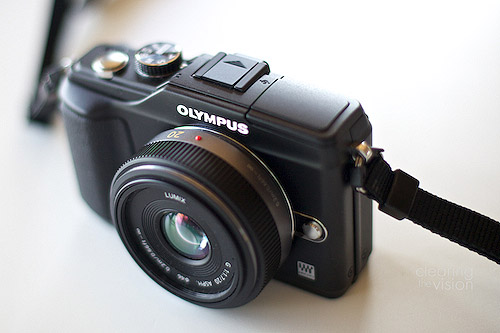
So I’m now the proud owner of an Olympus E-PL2 – one of the well-regarded Olympus EP PEN series. My experience lugging the big lad around Legoland was a step too far.
Despite only being released in January, the E-PL2 (which I’ll just call the EPL2 from now on to save on hyphens) is now on the virtual scrap-heap, having been superseded by the new E-P3. Which is why I got such a good price on it – with the kit lens I got it for $500 (from Amazon), while the E-P3 with the same lens is $900 (if you can find it at the moment).
(Technically, the E-P3 replaces the older E-P2, but the EPL2 was released in between these two, and so while it was supposed to be the less-impressive kid brother of the EP series cameras, it performs better than the (at the time) more expensive EP-2. You can get the EP-2 for around $500 too, which is nominally a bigger saving, but the EPL2 is a better camera, so I think that’s the one to get between the two old versions).

It lacks some of the things the new camera has – notably the touchscreen that lets you point to focus, faster autofocus all around, higher max ISO, and better movie capabilities – but interestingly DxO tests actually give the EPL2 better image quality results than its successors. Its results aren’t too far off the Canon Rebel XT body I bought as my first digital SLR five years ago. Impressive how far we’ve come technologically in a few short years.
I’d take an E-P3 if someone gave me, but the price difference between the two made the EPL2 an easy choice, especially as I was planning on using the camera as a more casual, walk around device than my main shooter.
And for that it does really well. It’s small, but not tiny – you can’t stick it in a trouser pocket (especially with the kit 14-42mm lens (which comes out at 28 – 84mm equivalent). but it’s certainly lighter and more manageable than my workhorse 5D Mark II with any lens attached.
What’s this Micro 4/3rds format anyway?
Jointly developed by Olympus and Panasonic (the lenses each make for the format are interchangeable across the manufacturers), the aim of this format is to put a pretty good-sized sensor into a smaller body, with smaller but interchangeable lenses.
These cameras work well for people moving up from point and shoots, looking for more quality and more control (although there are the usual Scene modes and auto-everything as options). But they also work for more experienced photographers like me, who don’t want to lug a chunky DLSR around all the time but can be demanding about performance.
A lot of the size reduction over DSLRs comes from not having a mirror system to project the image you’re intending to take into a viewfinder. Instead you either use the LCD screen (as most point and shoots do), or an electronic viewfinder which actually contains a small screen that displays what the lens is seeing. (For that reason these type of cameras are sometimes described using the clunky acronym EVIL – for Electronic Viewfinder, Interchangeable Lens).
The $1200 Fujifilm X100 has recently got a ton of attention for doing most of this, and by all accounts it’s nice to use and delivers good quality (and looks gorgeous), but if you don’t like the 35mm equivalent focal length, then you’re out of luck (making it EV, but not EVIL, I guess) as it only comes with one lens.
But the Micro 4/3rds format offers a good range of interchangeable lenses that work with all the M4/3rds cameras. There are wide primes, long zooms and even adaptors for a range of old-school legacy lenses from Voigtlander, Leica, Olympus and other brands – most of them you’ll have to focus manually.
As well as the kit lens, I got the well-regarded Panasonic LUMIX 20mm f/1.7 to create a more portable low-light monster. Especially with the in-camera stabilization, I’ve got sharp shots of (still) subjects hand-held at 1/4 second, which is insane, and something my 5D II can’t match with most my lenses.

Look, no viewfinder
Some other micro-4/3rds cameras sport viewfinders, but for the PEN series they’re an optional (and expensive extra). But the electronic viewfinder actually shows you what your image will be like (black and white, for example if you’ve selected that art mode, or with the correct depth of field if you’re shooting wide open).
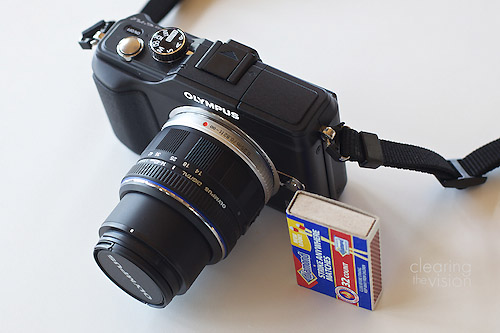
Forget the size, look at the sensor size
The solid image quality is largely down to the size of the sensor. At 13 x 17.3mm it’s not too far from the APS-C size in most consumer and prosumer DSLRs at 14.9 x 22.3mm – for comparison, the Canon G-series high-end point and shoots have sensors that measure 5.6 x 7.5mm – less than a fifth of the area.
Other smaller cameras have 12MP, but that file size is derived from the smaller sensors, compromising image quality, especially at higher ISOs.
Using it in real life
All this information might explain why it’s a good choice on paper, but what’s it like actually using the EPL2?
After nearly a week of shooting with it, mainly at relaxed social occasions rather than going out specifically to shoot, I can say I really like it, and I’m pleasantly surprised at the image quality.
This camera works brilliantly for casual situations like this, where photography isn’t your main objective but you’d like to have a good enough camera with you just in case. It’s small, light and unobtrusive. Especially if you compose using the LCD, it looks pretty much the same as a whole bunch of consumer point and shoots, so doesn’t attract the same sort of attention as a 5D Mark II with an L-series zoom on it. And you can drop another lens in your pocket and be ready for anything.
I mainly shoot in Aperture Priority, and I’ve customized the controls so I can adjust aperture, ISO, exposure compensation, focus point and face detection all very easily. I normally shoot with a single centre focus point (a throwback to my days using the Canon 5D, where only the centre point is reliable). This means I normally focus and then recompose, and I’m fine with that.
But with the accurate face detection enabled, that’s often faster, and so it’s nice to have that option when I’m photography my daughter, for example. It also allows you to shoot with the camera well away from your eyes and still be pretty confident you’ll get the focus you want. There’s very little shutter lag, and a usable but not super speedy burst mode.
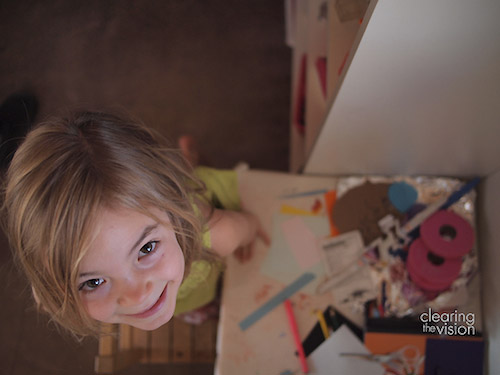
Composing and shooting via the LCD gives me a bit less confidence I’m getting the shot I want, after so long using a viewfinder. But when I review the shots, it seems I’ve got what I was looking for most of the time.
Wolf in sheep’s clothing
When I was taking some shots of the great band (Felix y Los Gatos) playing on the Plaza during the week, it seemed like I was just another local or tourist with a point and shoot, which was fine. But with the fast Panasonic prime attached, I was getting a nice narrow depth of field, and some reasonable shutter speeds even as it got dark.
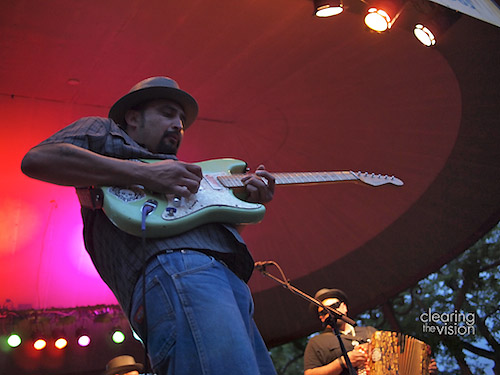
It’s perfect for street photography (not that I do much), especially if you set it to zone focus manually (i.e set a aperture than creates a wide depth of field so you know that, say, everything from 4 to 15 feet is in focus). The bright LCD and dazzling small blue power light on the top might give you away though, so perhaps a black Sharpie and the electronic viewfinder’s a good combinations for situations when you want to be particularly stealthy.
How I learned to stop worrying and love JPGs
To keep everything simple and relaxed, I’m trying out shooting JPGs, so I’m not tempted to do any processing on images that are taken more for fun than business.
The camera supports RAW and there’s even some RAW + JPG options that I could use, but the appeal of just shooting and being done is pretty strong for me. I’ll let you know if I stick with this plan, but the Oly JPGs come out pretty well.
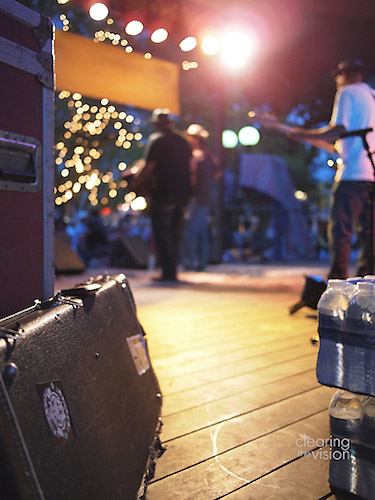
Conclusion
I’m really enjoying the little Oly, and while I’m sure the new E-P3 and forthcoming E-PL3 offer better performance (especially focussing), If you’re looking for a good deal the E-PL2 is worth looking at. The money you save over the new versions could be put towards the view-finder or a nice prime like the Panasonic 20mm that I got, or the apparently very nice (but pricey) Olympus M. Zuiko 12mm f/2.0.
Finally, I’d like to thank (and point you to) two resources that were really valuable while I was trying to figure out which smaller camera to get. Kirk Tuck, a photographer in Austin, Texas has a great blog that often covers Micro 4/3rds cameras, and Steve Huff is also well-informed and interesting on Leicas, Olympuses (Olympi?) and other non-DLSR stuff. Both well worth following if you’re interested in this area of photography.
8 replies on “The PEN is mightier than the point-and-shoot”
dammit, that looks good.
I can get one here for 574 (euros)
Nice looking wee camera okay – great looking results. Better than my tiny Canon that I carry instead of the DSLR.
Great review. I am trying to decide between the E-PL2 and E-PL3. The PL3 faster focus is very tempting but not being able to use flash and EVF at the same time is a factor.
Would love to hear your opinion?
Tony, the E-PL3 looks good, and though I’ve not used one, everyone seems to like the snappier feel all around from the 3s. But if using the flash and EVF at the same time is a requirement, then it’s obviously not going to work for you (or you could get the EP3, which is pricier of course, but has the built-in flash off to the side like the EPL2). So don’t know, to be honest.
I really want to take advantage of the low price, and am close to buying one. I do shoot some videos, of my kids, just family stuff, nothing serious. Will the EPL2 give decent results. A lot online on how bad it is for video. Can you share your experience on this/
Hi Sue. I’ve not shot a single minute of video on it, so I don’t know, I’m afraid. I’ve even customized the instant record button to do something more useful for me. Sorry.
[…] update my last post on the subject, my experience with the Olympus PEN E-PL2 micro 4/3rds camera is going well. Perhaps the first […]
[…] I came up with a two-fold plan to counteract this. The first stage was to buy the Olympus EPL-2 (part of the PEN series) and the Panasonic 20mm f/1.7 pancake lens and leave them in my bag, so […]